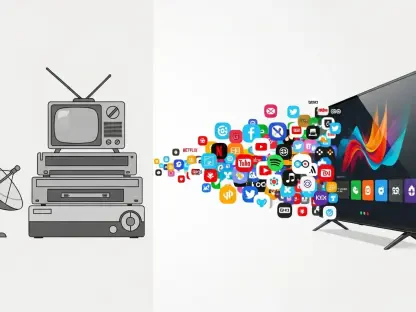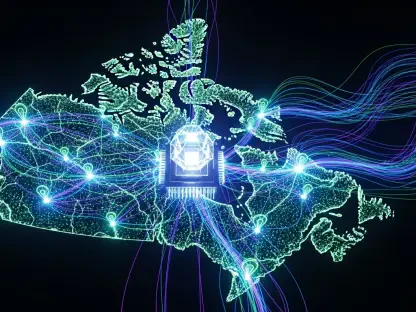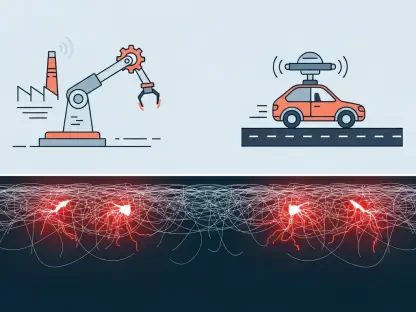In the vast expanses of rural landscapes, where the promise of high-speed internet often feels like a distant dream, a new player has emerged to challenge the status quo of connectivity. For countless households and professionals tucked away in remote corners, traditional internet services deliver nothing more than sluggish speeds or outright unavailability, leaving them cut off from the digital world. Starlink, a satellite broadband service developed by SpaceX, has stepped into this void with a bold claim: to bridge the digital divide with its network of low-Earth-orbit satellites. This innovative technology offers a glimmer of hope for those stranded in internet dead zones, but does it truly live up to the hype as the definitive answer for rural connectivity? By delving into real-world experiences and dissecting both its strengths and shortcomings, this exploration aims to uncover whether Starlink stands as a revolutionary fix or merely a temporary patch for a persistent problem.
Navigating the Realities of Starlink Deployment
Overcoming Initial Setup Barriers
For many rural residents, the arrival of Starlink represents a lifeline, but the journey to reliable internet is not without its hurdles. The initial setup might seem straightforward—unbox the dish, align it with the sky, and connect to a world of high-speed access. However, early attempts at installation often reveal a stark reality: placement is everything. A hastily positioned dish, perhaps propped up on a lawn or tucked behind an obstacle, can result in disappointing speeds barely reaching 50 Mbps. It becomes clear that an unobstructed view of the sky is essential to unlock the full potential, with properly mounted setups yielding download speeds closer to 200 Mbps. This steep learning curve can catch newcomers off guard, requiring patience and sometimes professional assistance to ensure the system operates at its best. The gap between expectation and execution during these first steps highlights a critical aspect of adopting this technology.
Beyond the technical challenges of positioning, the visual impact of Starlink’s equipment introduces another layer of consideration. Even with expert installation, the dish and its mounting hardware—often a utilitarian pipe or brace—can clash with the aesthetic of a rural home. While the sleek design of the dish itself is a step up from older satellite models, the overall setup might draw disapproval from household members who prioritize curb appeal. Solutions for a more seamless integration do exist, such as custom mounts or discreet placements, but these often come at an additional cost. Rural users must weigh the trade-off between achieving optimal connectivity and maintaining the look of their property. This balance underscores a practical dilemma that extends beyond mere functionality, touching on personal and familial preferences in the adoption of satellite internet.
Performance Expectations Versus Reality
When it comes to performance, Starlink often delivers numbers that can rival urban broadband, yet it’s not without notable caveats. Download speeds frequently hover around an impressive 150 Mbps, with peaks reaching up to 300 Mbps under ideal conditions, transforming how rural users engage with online content. Streaming, gaming, and remote work become viable in areas once plagued by buffering and lag. However, this strength masks a significant limitation in upload speeds, which typically linger between 15 and 30 Mbps. For the average user, this might not pose an issue, but for those reliant on uploading large files or engaging in high-definition livestreaming, the disparity compared to fiber-optic services is evident. This performance gap raises questions about whether Starlink can fully meet the diverse needs of rural internet users.
Digging deeper into performance, the variability of Starlink’s service can be a source of frustration for some. While the technology promises consistency through its satellite network, real-world conditions—such as weather or temporary network congestion—can lead to fluctuations in speed and connectivity. Users in remote areas, already accustomed to unreliable traditional services, might find these inconsistencies a minor annoyance compared to past struggles. Yet, for those transitioning with expectations of flawless operation, these dips can be a reminder that satellite internet, while advanced, operates within environmental and systemic constraints. Understanding and adapting to this variability becomes essential for rural adopters who must temper enthusiasm with realistic expectations of what the service can consistently provide.
Addressing Broader Challenges and Considerations
Hardware Limitations and Coverage Concerns
While Starlink’s core technology impresses, the accompanying hardware can sometimes fall short of expectations for rural homes with unique layouts. The Gen 3 tri-band Wi-Fi 6 router, bundled with the service, boasts a coverage range of over 3,000 square feet, yet many users encounter signal weaknesses due to walls or structural obstructions. In larger or multi-story homes, this can mean spotty connectivity in certain areas, pushing users to invest in third-party routers for better performance. Fortunately, Starlink’s app offers a bypass mode to facilitate integration with alternative equipment, but this solution adds an unforeseen expense and effort. For rural households already navigating tight budgets, this hardware limitation reveals a gap in the out-of-the-box experience that could hinder seamless adoption.
Another dimension of hardware challenges lies in the adaptability required for diverse rural environments. Not every home fits the ideal scenario for which the standard Starlink kit is designed, with some facing issues like dense tree cover or unconventional architecture that further complicates signal distribution. Users in such settings often find themselves troubleshooting beyond basic setup guides, seeking community advice or professional help to extend coverage effectively. This need for customization, while solvable, underscores that Starlink’s hardware may not universally cater to the varied spatial demands of rural properties. Addressing these discrepancies often falls to the user, highlighting a potential area for improvement in ensuring the technology matches the complexity of its target demographic’s needs.
Reliability and the Risk of Disruptions
Reliability stands as a critical factor when evaluating any internet service, and Starlink’s satellite-based system introduces both strengths and vulnerabilities. Most of the time, the service operates smoothly, delivering consistent access that transforms rural digital experiences. However, there are moments when unexpected disruptions strike, such as global network outages that can leave users disconnected without warning. These incidents, though infrequent, have been documented through user reports on platforms like Reddit and DownDetector, revealing the broader impact of systemic failures. For rural areas with no alternative connectivity options, such downtime can be particularly disruptive, emphasizing the importance of having a backup plan or secondary service to mitigate the impact of these rare but significant hiccups.
Exploring the reliability concern further, it becomes apparent that Starlink’s dependence on a vast network of satellites and ground infrastructure inherently carries risks not always seen in wired connections. While traditional rural internet might fail due to local issues like damaged lines, Starlink’s outages often stem from larger-scale problems affecting thousands simultaneously. This systemic vulnerability, though not a frequent occurrence, serves as a reminder that no technology is entirely immune to failure. Rural users must factor in this unpredictability, balancing the transformative benefits of high-speed access against the occasional need for patience or alternative solutions during unexpected service interruptions. This dynamic shapes the broader conversation around trusting satellite internet as a sole connectivity source.
Social and Ethical Dimensions of Adoption
Choosing Starlink extends beyond technical merits, often entangling users in social and ethical considerations tied to its parent company and leadership. Elon Musk, as a polarizing public figure, has drawn significant scrutiny for decisions and statements made in recent years, leading some to question the implications of supporting a service under his influence. Rural users might face judgment from peers or family for opting into Starlink, despite its superior performance compared to alternatives like geostationary satellite services with high latency or projects like Amazon’s Project Kuiper, which remain years from operational status. This tension between practical need and personal values creates a unique dilemma, where the benefits of connectivity must be weighed against broader cultural or moral concerns.
Delving deeper into this social aspect, the decision to adopt Starlink can reflect broader societal debates about corporate influence and individual responsibility. For many in rural areas, the lack of viable alternatives often tips the scale toward practicality, overshadowing reservations about the company’s associations. Yet, this internal conflict persists, as users grapple with aligning their need for internet access with discomfort over supporting a controversial entity. This dynamic adds an unexpected layer to the adoption process, illustrating how technology choices can intersect with personal ethics and public perception. Rural connectivity, in this context, becomes not just a matter of infrastructure but a reflection of navigating complex social landscapes while seeking digital inclusion.
Reflecting on a Pioneering Yet Imperfect Solution
Looking back on the journey of Starlink’s impact in rural regions, it is clear that this technology has carved out a pivotal role in addressing long-standing connectivity gaps. Its ability to deliver high-speed internet to areas once deemed unreachable stands as a testament to innovation, enabling countless households to engage with the digital age. However, challenges like setup complexities, performance disparities, and hardware limitations have often tempered initial excitement, revealing areas where execution falls short of ambition. Rare outages and social controversies linked to its leadership have further complicated the narrative, painting a picture of a service both transformative and flawed.
Moving forward, the path for rural internet users involves embracing Starlink’s strengths while advocating for enhancements to address its shortcomings. Exploring hybrid solutions, such as pairing satellite access with emerging local networks, could provide a buffer against disruptions. Additionally, pushing for improved hardware options and more affordable aesthetic integrations might ease adoption barriers. As the landscape of connectivity continues to evolve, Starlink’s role as a pioneer should inspire ongoing dialogue about achieving truly universal access, ensuring that rural communities are no longer left behind in the digital revolution.









